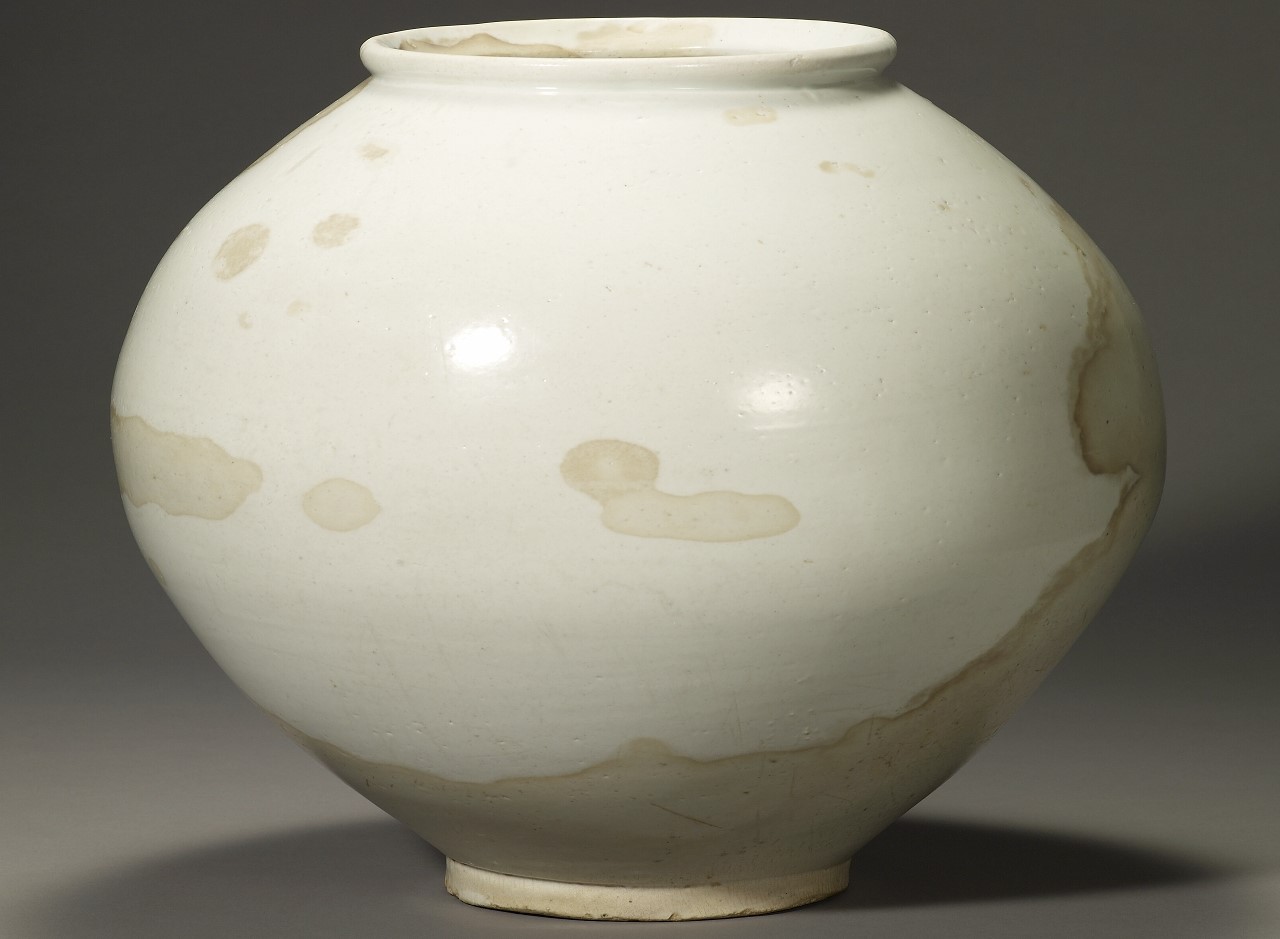Moon jar, Dalhangari in Korean, is not only an iconic Korean utilitarian item but also a deeper expression of being Korean.

White Porcelain Moon Jar, National Treasure of Republic of Korea No. 309. Photo courtesy of Wikimedia Commons.
Having a thing for Korean culture, I seek out different subjects and stories—to learn and understand more—while also sharing through my stories what I’ve picked up and taken away. Just recently, I bumped into this YouTube video, Making a Moon Jar by the Asian Art Museum, featuring Korean ceramicist Lee Dong-sik recreating a moon jar from the Joseon dynasty. In watching and listening to him through the making process, I realized that the moon jar, Dalhangari in Korean, is not only an iconic Korean utilitarian item but also a deeper expression of being Korean.
Back in the Joseon period, moon jars became popular in the latter part of the 17th century until sometime in the 18th. The following video has artist Lee showing his method of making an 18th-century moon jar, which he says “was a unique experience for me, a return to the beginning.” Back when he was studying ceramics, he recalls picking up a piece of a moon jar from a kiln site and carefully examining it. “I was captivated by the white porcelain of the Joseon dynasty and have worked with it for about twenty years.”
In the Joseon era, the Confucian principles of simplicity, moderation, and harmony heavily influenced Korean art and culture. The moon jar’s simple design blends these ideas, reflecting a Korean taste for subtle natural beauty. At a glance, the moon jar is a big white pot resembling a full moon, but if you observe closely, it looks like a distorted old moon. That specificity, though, paired with a bigger aperture and a smaller radius below, defines and distinguishes the moon jar.
But something that grabs me most about this classic Korean porcelain is that it’s made by piecing together two separate halves. Moon jars have been used for storage, as flower vases, or for decorations. Studies reveal that esteemed Korean artist Kim Whanki said that every moon jar was special in terms of look, shade, and nuances, suggesting the love and precision with which it was made.
Although many Korean artists have made moon jars since their inception in South Korea, only a few from Joseon remain. Some moon jars have reportedly sold for huge amounts at auctions. The Korea Herald, in one of its recent articles, had that a “BTS-themed moon jar” was unveiled on Hangul Day (Korean Alphabet Day, celebrated annually on October 9 in South Korea), a joint effort between the National Museum Foundation of Korea and Hybe to promote Korean cultural assets.
The beauty of a moon jar primarily comes from using Baekja, a delicate white kaolin clay known for its fine quality. In Making a Moon Jar, Lee describes the intricate process of getting white clay from Sancheong to Hanyang (now Seoul) and uses Kaolin clay sourced from Sancheong to make his piece. As I said earlier, the jar looks best for its anomalies: a ridge running through its center that highlights the joining of two independent units, its irregular shape, its large size, and the striking white color that varies from jar to jar—all a result of meticulous handcraft and how beautifully it burns in the flames, eventually giving it its characteristic shine and textures.
A process in which all things natural unite and transform into something as beautiful as the moon jar shows Korea’s reverence for the elements and nature’s transformative power. The moon jar reflects the Korean value of living in harmony with nature and the interconnectedness of everything. Its frequent portrayal in Korean art and literature underlines its significance as a cultural symbol. For example, works in the Chaekgeori genre as well as poems and writings have often included the moon jar, extolling its timeless beauty and the important message it conveys.
Kobalt will provide Madverse’s community of songwriters, composers, and producers with comprehensive global publishing services…
From ‘Moving’ to ‘Cashero,’ K-drama superheroes’ powers come with strings attached — and it’s this…
The highly-anticipated LP will take its name from a traditional Korean folk song that is…
From a ‘Rockstar’ fanmeet, to an immersive food festival, to a murder mystery party, these…
The New Delhi hip-hop duo’s 10th anniversary celebrations rolls into 2026 with shows in Australia,…
Yasuhiro Nightow’s Space Western Trigun gets new life in its brand-new reimaging, 'Trigun Stargaze'